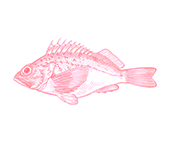




- Say No
Wild Caught
Region:
WA
- Southern rock lobster are caught in fisheries throughout southern Australia. The SA fishery accounts for around 50% of the total number caught.
- Southern rock lobster are caught in baited pots deployed on the seafloor on sand, around rocky reefs on the south coast of WA.
- There is evidence that southern rock lobster populations are seriously overfished, though scientific assessment of the fishery is rudimentary.
- The baited pot fishing methods used likely pose a low risk to habitats or other species.
- Southern rock lobsters are known to play an important role in maintaining the health of rocky reef ecosystems, though management of the ecosystem effects of the WA fishery is based on a totally different fishery, species and location.
- WA South Coast Crustacean Managed Fishery (6.8t in 2020/21)
Southern rock lobster are found throughout southern Australian and New Zealand waters and are fished commercially in WA, SA, Victorian and Tasmanian waters. Southern rock lobster are found over rocky reefs and adjacent sand, and some of the stock migrates annually from subtidal reefs to the continental shelf break in waters up to around 250m depth.
In WA, southern rock lobsters are caught in baited pots deployed on the seabed around rocky reefs and migratory routes along the south coast, with most fishing activity occurring around the Esperance region.
A single population of southern rock lobsters extends across southern Australia, though fishery management is not done in a cooperative manner between jurisdictions. This presents serious sustainability challenges, particularly as the WA fishery operates at the western extremity of the Australian population. The link between the abundance and location of breeding adults and the amount and location of juvenile southern rock lobsters entering the fishery is not known, presenting a further challenge.
There are only very rudimentary management arrangements in place for the WA fishery, with scientific data collection showing some of the worst estimates on record for southern rock lobster population abundance in recent years. It is highly likely that populations are well below healthy levels, though recent external events (trade restrictions and pandemic-related supply disruptions) may have acted to reduce the threat of overfishing.
While the pot fishing methods used are unlikely to pose a serious risk to habitats, other species (though there is some risk of whale entanglement) or the wider ecosystem there has been little scientific study of the ecosystem effects of the fishery. This is seriously concerning, as southern rock lobster populations are known to play an important ecological role in maintaining the health of rocky reef ecosystems in eastern Australia and New Zealand. Concerningly, reported ecosystem impacts of the fishery are inferred by managers from conclusions drawn WA west coast western rock lobster fishery – a totally different species, in a different location, caught by a different fishery.


